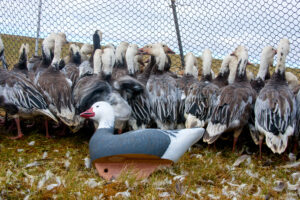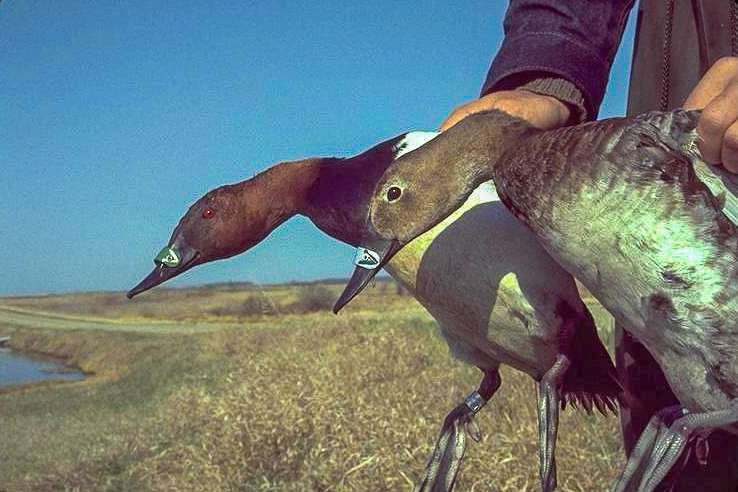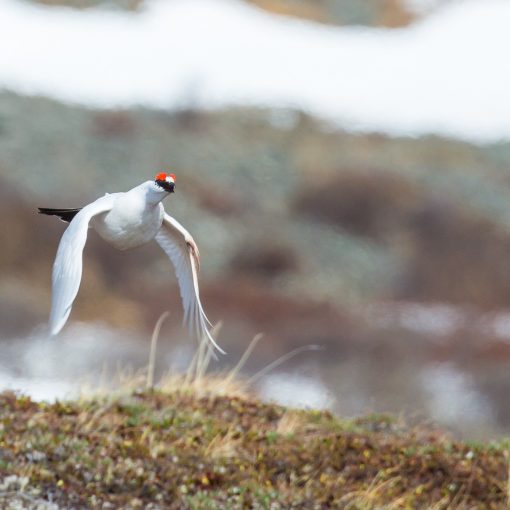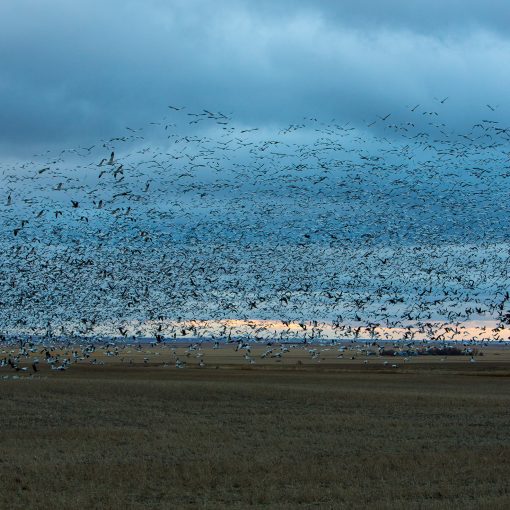Podcast: Play in new window | Download
Subscribe: Apple Podcasts | RSS
Overview
We continue our conversations about banded waterfowl with Drs. Ray Alisauskas, Mike Anderson, Jim Leafloor, and Chris Nicolai.
Show Notes
0:25 – Introductions and Background
1:50 – Jim Leafloor gives us background about how the idea of using banded waterfowl to estimate abundance of birds came about
3:30 – Ray Alisauskas introduces himself and talks about his experiences with banded waterfowl, including how hunters play such an essential role in providing important data for management. How many mallards do you think are in North America?
11:15 – Jim Leafloor introduces himself and talks about developments and improvements in the banding program as well as his favorite stories. What percent of mallards do you think live more than 14 years?
20:50 – We discuss as a group the differences and similarities between estimates of abundance based on banding data vs those based on surveys.
26:28 – Ray describes why it is so important to report your bands. This conversation continues into stories about banding adventures, which is inevitable when you work with folks for many decades in field – Houstan we have a problem.
31:30 – Chris Nicolai introduces himself and talks about his banding adventures. Chris may have banded as many different species as anyone. Learn about Dewey the Blue Goose and many other birds. Chris tells us about how we learn about migration of waterfowl using modern technology including geolocators.
56:10 – We transition into great stories about banded Canvasbacks with Mike Anderson. Learn about how Mike used observations of individual Canvasbacks marked with nasal saddles (low tech), shown in featured photo, to learn about these fascinating birds. Mike pioneered work on individually marked birds, amazing data that we are still trying to fully utilize for management. Imagine we could manage harvest of birds based on their individual quality.
1:22:20 – We finish up with some fun banding stories.
1:28:00 – Outro.
Watch this episode with video!
Additional Resources
- Map of movements by the Canvasback marked with nasal saddle JX. on the prairies of Manitoba. Map provided by Mike Anderson.
- US Geological Survey Bird Banding Laboratory
- Report Your Band!
- DU podcast on banding, citizen science, and band targeting – episode 33 and and 34 in season 1.
- Dewey the Snow Blue Goose in a banding net full of real Blue Geese (Baffin Island 2014). Photo Credit Chris Nicolai.

Feature Photo: A Canvasback pair marked with nasal saddles. Photo credit Mike Anderson.





